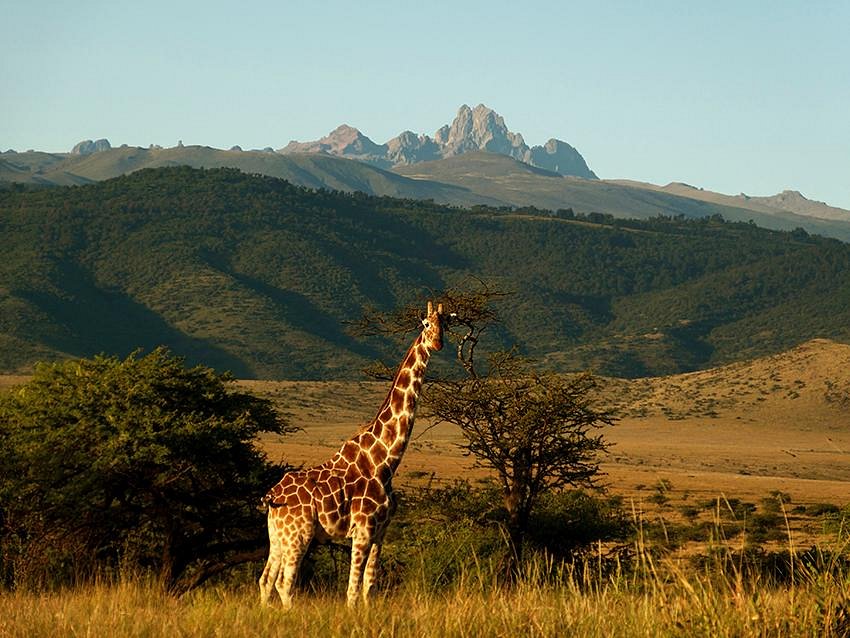Laikipia Plateau: Your Next Safari Destination
Laikipia Plateau, situated in central Kenya, is an extraordinary region renowned for its diverse ecosystems and rich wildlife. Spanning approximately 9,500 square kilometers (3,669 square miles), the plateau is characterized by its lush savannahs, rolling hills, and open grasslands interspersed with acacia woodlands. The region has become a focal point for conservation and eco-tourism, offering a unique blend of wildlife experiences and stunning landscapes. Home to several private conservancies, Laikipia Plateau plays a crucial role in wildlife conservation efforts and supports a variety of habitats. Its commitment to sustainable tourism makes it an ideal destination for visitors looking to explore Kenya’s natural beauty while contributing to the preservation of its wildlife.
Wildlife Scenery
Laikipia Plateau is teeming with wildlife, making it one of the premier destinations for game viewing in Kenya. The region is home to a diverse array of mammals, including elephants, giraffes, lions, leopards, and several species of antelope, such as oryx, Grant’s gazelle, and impala. The plateau is particularly known for its significant populations of endangered species, such as the African wild dog and the Grevy’s zebra. The varied landscapes provide excellent opportunities for wildlife sightings, with open plains allowing for unobstructed views of roaming herds and dramatic mountain backdrops enhancing the scenery. The combination of both wildlife and striking landscapes creates an unforgettable safari experience.
Birds in Laikipia Plateau
Laikipia Plateau is a birdwatcher’s paradise, boasting an impressive array of bird species. Over 400 bird species have been recorded in the region, making it an important area for avian biodiversity. Bird enthusiasts can expect to see a variety of raptors, including the African fish eagle, tawny eagle, and bateleur, as well as colorful songbirds like the hornbill and sunbird. The plateau’s diverse habitats support both resident and migratory species, providing ample opportunities for birdwatching throughout the year. The combination of forested areas, open grasslands, and riverine ecosystems creates an inviting environment for various bird species, ensuring that visitors have an enriching birding experience.
Weather and Climate
The climate of Laikipia Plateau is characterized by two main seasons: a wet season and a dry season. The wet season typically runs from March to May and again from October to December, with average rainfall ranging from 600 to 1,200 mm (23.6 to 47.2 inches) per year. During this time, the landscape becomes lush and vibrant, attracting wildlife. The dry season, occurring from June to September and January to February, features warmer temperatures, ranging from 20°C to 30°C (68°F to 86°F) during the day and cooler nights around 10°C (50°F). The best time to visit Laikipia Plateau for wildlife viewing is during the dry months, as animals tend to congregate around water sources, making them easier to spot.
How To Get To The Laikipia Plateau
Reaching Laikipia Plateau is relatively straightforward, with several options for transportation. The plateau is located approximately 250 kilometers (155 miles) north of Nairobi. Travelers can choose to drive, taking the Nanyuki road through picturesque landscapes, which typically takes around 4-5 hours. Alternatively, there are also scheduled domestic flights from Nairobi to nearby airstrips, such as Nanyuki Airstrip or Ol Pejeta Conservancy Airstrip, which significantly reduce travel time. Once in the region, many lodges and conservancies offer transfer services to facilitate access to various attractions within the plateau.
Activities to Engage In The Laikipia Plateau
Laikipia Plateau offers a range of activities that allow visitors to fully immerse themselves in its natural beauty and wildlife. Some of the activities include:
Game Drives: Guided safari drives provide an excellent opportunity to observe wildlife in their natural habitats, particularly during the early morning or late afternoon when animals are most active.
Walking Safaris: Experience the thrill of a walking safari with knowledgeable guides, offering insights into the flora and fauna of the region and the opportunity to track animals on foot.
Birdwatching: With over 400 species recorded, birdwatching is a rewarding activity for enthusiasts of all levels. Guided birding tours can help identify and spot various species.
Cultural Experiences: Engage with local communities to learn about their traditions and conservation efforts, providing a deeper understanding of the region’s cultural heritage.
Horseback Riding: Explore the plateau on horseback, providing a unique perspective on the landscape and wildlife while enjoying the thrill of riding in a natural setting.
Night Drives: Experience the nocturnal wildlife of Laikipia on guided night drives, where you may encounter species that are more active after dark.
Photography: Capture stunning landscapes, wildlife, and cultural moments, with numerous opportunities for both amateur and professional photographers.
Park Rules
While visiting Laikipia Plateau, it is crucial to adhere to specific park rules designed to protect both the environment and wildlife. Visitors are encouraged to stay on designated paths and trails to minimize ecological impact. Approaching or feeding wildlife is strictly prohibited, as it can disrupt their natural behavior and lead to dangerous encounters. Noise levels should be kept to a minimum to maintain the tranquility of the area and avoid startling animals. Littering is not allowed; visitors should ensure they dispose of their waste properly. Following these guidelines helps to preserve the natural beauty of Laikipia Plateau for future generations.
Safety and Vaccination
Safety is an essential consideration when visiting Laikipia Plateau. The region is generally safe for tourists; however, it’s recommended to travel with a reputable guide or tour operator to enhance security and provide local knowledge. Before traveling to Kenya, visitors should consult with their healthcare providers regarding vaccinations. Recommended vaccines include yellow fever, hepatitis A, and typhoid, among others. Malaria is present in some areas of Kenya, including Laikipia, so it is advisable to take prophylactic medication and use mosquito repellent, especially during the wet season

